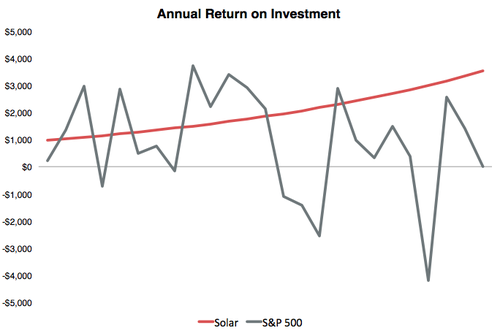This is a very important question. Why Solar?
While pursuing my degree in Environmental Studies I was presented with a lot of global problems and potential solutions. Everything ranging from overpopulation in Africa to deforestation in the Amazon. So why did I choose solar when I was looking for a way to give back? Because there are only four sources of energy on our planet and solar is the biggest one, that's why...
So what are these four sources of energy you ask?
1. Chemical
This is the one that most people think of when they think of energy. This is everything that gives off energy in some chemical reaction such as burning. Coal, petroleum, nuclear, natural gas, etc. So the important thing to remember about this energy source is that it is limited. Lots of people argue about what the limit is, but the fact is there is a limit. We are using this faster than it can be replaced. This is also an important concept in this discussion; sustainability. In a nutshell, if you're using something faster than its being replaced, its not sustainable. If you spend more money than you make every month, eventually you'll be broke. Depending on your bank account balance it might take months or decades, even generations. But eventually you, or your descendants, will be broke...
So, we're burning up the chemicals available to us faster than they're being replaced.
2. Geothermal
The center of the earth is hot. This is caused by gravity. I'm not a geologist or physicist, but I think we can all agree that these two facts are correct. This heat can be harnessed with geothermal pumps, etc. I don't know the details, but the my understanding is that the options are limited and eventually hot springs cool off if you put too much hot water out of them. I'm summarizing.
3. Lunar
This one gets people every time, but the moon creates a little energy on the earth with tides. As the moon pulls water around the globe, the water molecules rub against each other and create friction which produces a little heat. There are also ways to harness this energy and people do. In certain areas of the world there are pretty big tides and they let the moon pull water into a bay with a level for example. When the tides goes out and the water wants to run from the bay back to the ocean, people let the water run through a turbine and create electricity. This is a beautiful way to harness lunar energy, but I haven't figured out how to do it in Colorado yet...
4. Solar
I of course saved the best for last. As I mentioned before, solar is the biggest source of energy on our planet earth. You can google the exact figures, but its a lot. So the sun shines on earth all the time and causes wind, rain and just plain heat. So hydro is really solar. Wind is solar. And direct sun on solar panels is solar.
So this pretty broad, long term view of energy resources available to the inhabitants of earth (you and me), hit me in college. Eventually we all need to get our energy from the sun, so why not start now?
I'd love to hear your comments on this macro concept. Thanks for reading.



